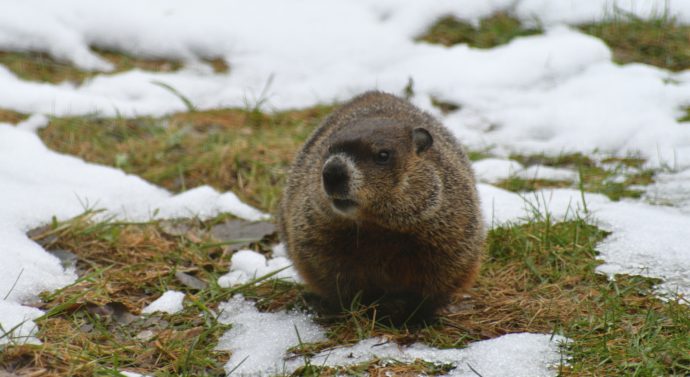
Hibernation habits: What life in the winter is like for mammals in the Ozarks
Community December 7, 2020, Comments Off 148The weather is finally turning cold in early December, and while this means added layers and less time outside for people, this also means changes in habits and routines for the animals that live here in the Ozarks. Of course everyone knows about bears hibernating and pesky bugs disappearing until warm weather late in spring, but what about the rest of the animals that call Southwest Missouri their home? Specifically, mammals in this part of the country have amazing ways of dealing with cold winter weather.
One of the most fascinating habits of a mammal during the frigid, winter months is their ability to hibernate. From big animals like bears to smaller animals like groundhogs, mammals build their fat storage to hunker down until the groundhogs hopefully don’t see their shadows in February. A groundhog’s hibernation is especially interesting, with their heart rate slowing from around 100 bpm to anywhere as low as 15 bpm and their body temperature falling from 90 degrees to sometimes as low as the upper 30s.
If you’ve been wondering why you’ve been seeing groundhogs out for an especially long time this fall season–or even if you haven’t–that can be caused not just by warmer temperatures. Francis Skalicky, the media specialist at the Missouri Department of Conservation, talked about groundhogs and other regional critters.
“The Ozarks’ best known ‘true’ hibernators are groundhogs,” Skalicky said. “Generally, groundhogs (also called woodchucks) go into hibernation somewhere from late October through mid-November. The fattest and oldest adults are usually the first to hibernate while lean, young adults are usually the last to hibernate. Temperature and length of daylight are the occurrences that trigger hibernation.”
So if you’ve been seeing lingering groundhogs in backyards lately, they may just be young and looking for more food. Groundhogs aren’t the only animals that change their habits based on the colder weather. In fact, a lot of animals find warmer places to ride out the winter season. One of those animals are bats.
“Regardless of whether you want to classify their winter inactivity as ‘hibernation’ or ‘winter dormancy,’ we all know they’re going into caves now for the winter. So humans should stay out of them,” Skalicky said.
Bats who are in their caves for the winter are not expecting to be disturbed by humans, so if you’re wanting to help the wildlife in the area, stay away from caves to not disrupt bat colonies. Doing this would have a detrimental effect on the colonies, not to mention negatively affecting the insect control that bats provide.
Many animals handle the winter in different ways without even hibernating. That can mean growing thicker, heavier winter coats of fur, or for birds, fluffing their down feathers that hide under their exterior feathers. Another tactic for animals to stay warm is to eat heavier in the autumn.
“This creates extra fat which provides bodies with insulation and helps them make it through leaner foraging times of winter,” Skalicky said.
So don’t worry about putting on those extra pounds during the holidays or bundling up so much it’s hard to move. Be like the groundhog and hibernate until warmer weather makes outside a little more bearable.
Article by Claire Ellerman